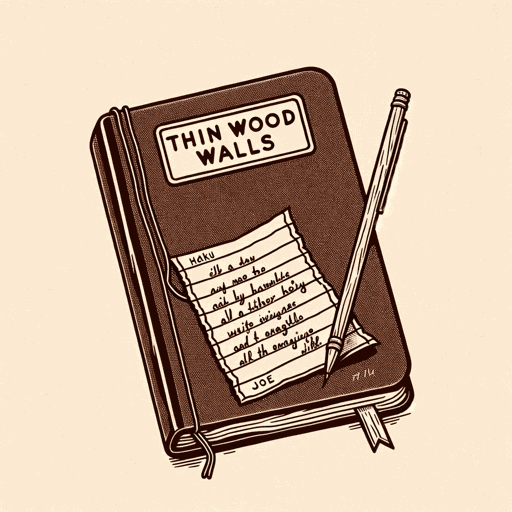41 pages • 1 hour read
David PatneaudeThin Wood Walls
Fiction | Novel | YA | Published in 2004A modern alternative to SparkNotes and CliffsNotes, SuperSummary offers high-quality Study Guides with detailed chapter summaries and analysis of major themes, characters, and more.
Symbols & Motifs
Haikus
Haikus symbolize connection and expression. When words fail him, Joe turns to haikus to capture his emotions and observations. Haikus are a form of Japanese poetry. They are hyper-structured, consisting of three lines and 17 syllables in five-seven-five syllabic meter. Haikus are traditionally used to capture the beauty of nature. Joe’s haikus are messages of hope, embodiments of his feelings, and a vehicle to express the atrocities faced by his family. Haikus demonstrate Joe’s subconscious connection to his Japanese heritage and culture. In revealing that Mike also wrote haikus in lieu of journal entries, Patneaude draws an intimate connection between Joe and his brother even after Mike’s death.
Tule Lake
Tule Lake is both a setting and a symbol. It is a place of incarceration where Japanese Americans are abused. People at Tule Lake are systematically oppressed and dehumanized by American soldiers, the unforgiving landscape, and inhumane conditions. The schools are under-resourced, the weather is harsh, and the people live in barracks without privacy. Tule Lake is an ironic name because there is no lake. Joe digs up seashells, implying that Tule Lake was once covered by ocean. Its bleakness reflects Joe’s lack of freedom and the abuse of human rights.

